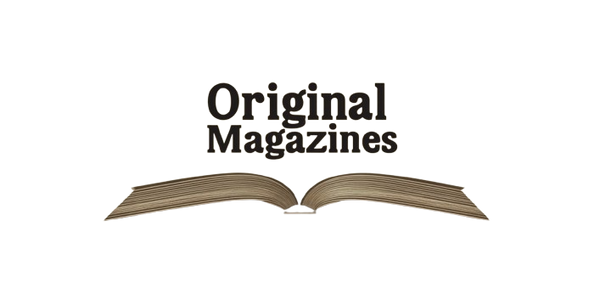Bulganin, Khrushchev, and the Power Struggle of 1955: The Soviet Union at a Crossroads
When readers picked up the July 25, 1955 issue of Time Magazine, they were holding a snapshot of one of the most critical moments of the Cold War. With the death of Stalin only two years earlier, the Soviet Union was still in the throes of redefining its leadership. This issue captured the complicated dance between Nikolai Bulganin, Nikita Khrushchev, Vyacheslav Molotov, Lazar Kaganovich, Georgy Malenkov, and Marshal Georgy Zhukov as they vied for influence, projecting an image of unity while hiding deep rivalries.
The story coincided with the Geneva Summit of 1955, a historic meeting between East and West that brought together U.S. President Dwight D. Eisenhower, British Prime Minister Anthony Eden, French Premier Edgar Faure, and Soviet leaders. For the first time since World War II, the world saw cautious dialogue rather than outright confrontation between superpowers.
The summer of 1955 was a turning point. The Geneva Summit represented a brief “Spirit of Geneva,” an attempt to ease tensions that had risen sharply during the Korean War and the development of nuclear arsenals. While the West was cautiously optimistic, Time reminded its readers that Soviet politics remained opaque and treacherous.
The magazine analyzed the peculiar role of Nikolai Bulganin, who, though Premier of the USSR, was often perceived as a figurehead. Real power, the article suggested, lay increasingly with Nikita Khrushchev, who had consolidated control of the Communist Party and was maneuvering to assert dominance over his rivals.
Time’s reporting was significant because it translated the shadowy, faction-driven world of Soviet politics into something ordinary Americans could grasp. By showing readers who these men were, what they represented, and how they jockeyed for control, the magazine made sense of a regime that was both mysterious and menacing.
The July 25, 1955 issue was striking not only for its analysis but also for its visuals. Time’s editors paired sharp writing with photographs that symbolized the Soviet leadership’s public face and private struggles:
-
Group portraits of the Soviet delegation at Geneva—Zhukov, Khrushchev, Bulganin, Molotov, and Gromyko—captured the staged unity of a leadership riddled with suspicion.
-
Action images, such as Bulganin reviewing the May Day parade or sitting with Tito in Yugoslavia, illustrated the diplomatic theater that masked power struggles.
-
A special section titled “The Chummy Commissar” profiled Bulganin, noting his charm and diplomacy but questioning whether he had the authority to shape Soviet policy.
This was classic Time: blending hard news with personality-driven profiles, making geopolitics both accessible and engaging.
-
Bulganin as “The Chummy Commissar” – portrayed as affable and approachable, but ultimately more of a diplomat than a dictator.
-
Khrushchev Rising – though not yet the undisputed Soviet leader, Khrushchev was already showing signs of becoming Stalin’s true successor.
-
Molotov the Survivor – still wielding influence as Foreign Minister, but increasingly sidelined by younger rivals.
-
The Geneva Stage – Time emphasized how Geneva allowed the Soviets to project a new image of cooperation while still pursuing hardline policies.
-
The Two Plans for Europe – the issue compared the Western proposal for free elections and German reunification with the Soviet plan that would keep Germany divided and communist influence intact.
For collectors of vintage Time magazines, the July 25, 1955 issue is particularly valuable because it documents:
-
A Cold War turning point—the Geneva Summit was the first major diplomatic meeting of the nuclear age.
-
The emergence of Khrushchev—within two years he would deliver his “Secret Speech” denouncing Stalin and launch reforms that reshaped the USSR.
-
Bulganin’s fleeting prominence—a reminder of how quickly Soviet leaders could rise and fall in the Kremlin’s ruthless political environment.
-
Unique photography and analysis—capturing not just world leaders but also the atmosphere of the mid-1950s Cold War.
Owning this issue is like holding a Cold War artifact, a primary source that shows how Americans in 1955 interpreted and understood their adversaries.
Time’s coverage of 1955 reminds us how print journalism shaped public understanding of the Cold War. Before television dominated the news cycle, Americans relied on magazines like Time to bring global events into their homes with clarity and drama.
For historians, collectors, or anyone curious about the Cold War, the July 25, 1955 issue is more than an old magazine—it is a window into the mindset of the 1950s.
👉 Browse thousands of original Time magazines from the 1930s to the 1970s at our collection:
Original Time Magazines Collection
Each issue is a tangible artifact, letting you experience history exactly as it was reported to the people who lived through it.
The July 25, 1955 issue of Time Magazine is a landmark in Cold War journalism. It captured the Geneva Summit, the emerging rivalry between Khrushchev and Bulganin, and the West’s cautious optimism for peace. Its mix of analysis, photography, and narrative storytelling makes it as valuable today for collectors as it was essential for readers then.
For those fascinated by Cold War history, this issue is a must-have collectible—a reminder of when the world stood at a crossroads, uncertain whether the future held cooperation or conflict.

